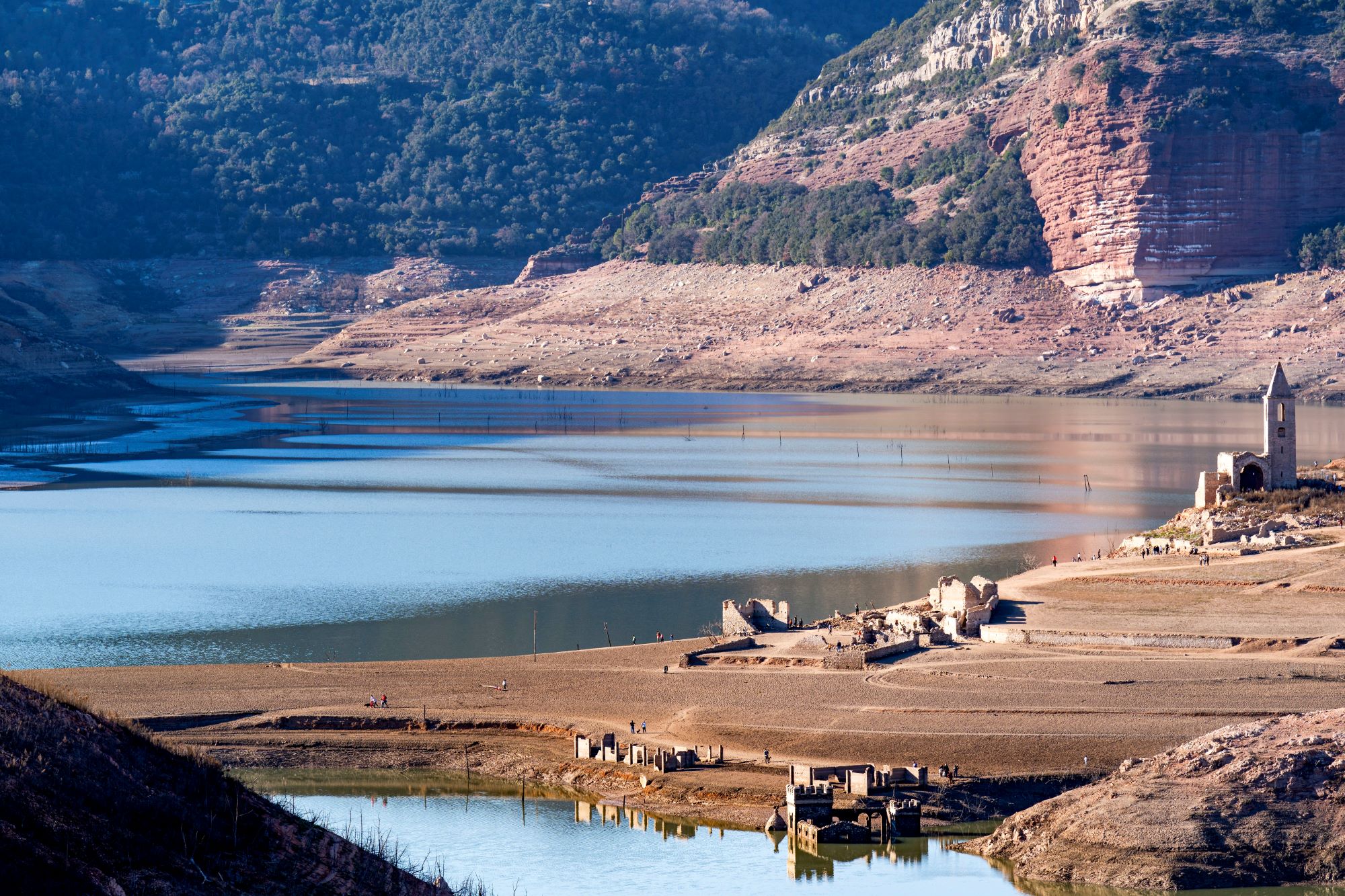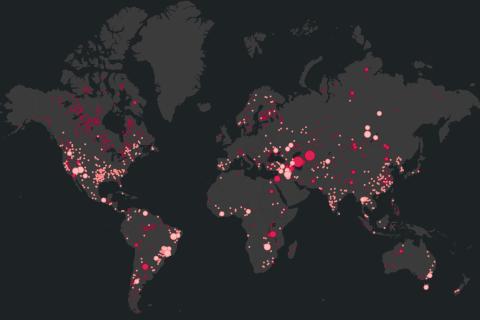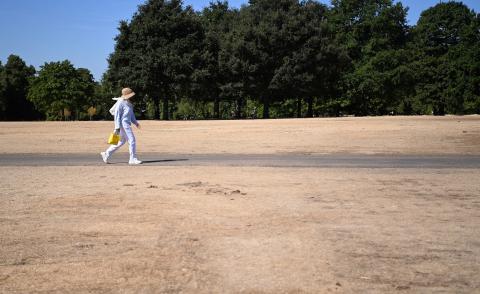Reactions: Pollution aggravates water scarcity problem
In 2010, nearly 1,000 sub-basins around the world were facing water shortages. But when considering not only water quantity, but also water quality, this figure rises to more than 2,500, according to a study published in Nature Communications. By 2050, the authors estimate that up to a third of sub-basins will face severe shortages of clean water, which could affect 3 billion people. Southern China, Europe, North America and Africa will be the most affected regions.

State of the Sau reservoir (Barcelona) on 4 February 2024. Photo: EFE/Siu Wu.
contaminacion agua - Encarna Esteban EN
Encarna Esteban
Full Professor of Economic Analysis at the Faculty of Social and Human Sciences of the University of Zaragoza
All forecasts on the current and future impacts of climate change warn that they will be associated with increases in temperatures, decreases in precipitation and a greater incidence and severity of extreme natural effects. In this context, the management of water resources and the adaptation of societies and economies to a context of scarcity of these resources is one of the main environmental challenges of today. The pressure on water resources will be particularly severe in arid and semi-arid regions of the world. In fact, in 2022, Europe experienced the most severe drought in the last 500 years. The problem is particularly worrying in Spain, where, for example, in Catalonia, the Plan Especial de Sequías (PES) has been activated with reductions in water use and extraordinary measures to guarantee the supply of this resource.
In this context, the article by Wang et al. (2024), recently published in Nature Communications, makes a major contribution to the scientific debate as it warns that water scarcity will be aggravated by pollution problems that will lead to further reductions in water availability. Water scarcity situations will be worsened by resource pollution that will further reduce freshwater availability.
In general, water quantity and water quality issues have been studied separately. However, the high concentration of pollutants in many river basins may render these resources unusable, aggravating the problem of water scarcity. Probably one of the most impactful results of this study is the fact that the authors state that by 2050 the number of river basins with extreme water scarcity situations could triple if we consider scarcity and pollution problems together. As the authors state, the regulation and control of pollution problems in water bodies is urgent, not only to protect ecosystems and human health, but also to avoid further exacerbating the problems of scarcity of these resources.
contaminación agua - David Pulido EN
David Pulido Velázquez
Director of the Water and Global Change Department
This study analyses on a global scale (considering more than 10,000 sub-basins) potential impacts of nitrate pollution on drinking water scarcity in 2010 and under different future climate and socio-economic scenarios in the 2050 horizon.
Most research on scarcity focuses exclusively on the quantity of the resource. This work underlines the enormous importance of considering water quality in future water management policies for sustainable development. It will therefore contribute to raising awareness of the need to advance policies aimed at improving water status in order to preserve this vital resource. In Europe, the entry into force of the European Water Framework Directive (2000) was an important step in the consideration of quality and quantity aspects in water resources management policies in member states, although much remains to be done. As this study shows, drinking water scarcity has an important component due to nitrate pollution and will be exacerbated in the future.
To analyse the effect of pollution on scarcity, the article focuses exclusively on the study of nitrates, which is the primary cause of poor chemical status or risk of achieving it in most surface and groundwater bodies. Agriculture is the main consumptive use of water resources in most countries, and the main driver of nitrate pollution (in this work it was estimated that 69 % of nitrate pollution in 2010 was of agricultural origin). Necessary agricultural use is therefore one of the main drivers of scarcity in most of the basins studied. Although nitrates are the main cause of the poor status of water bodies, there are many other pollutants (chlorides, emerging pollutants, etc.), which make the water undrinkable. Therefore, the effect of quality on scarcity is even greater than that analysed in this work, which is limited to the analysis of nitrate impacts.
Work such as this, with a global-scale modelling, allows us to focus on the need to consider quality in general policies, and to identify hotspots, critical areas where more detailed analysis is needed. Here, the use of hydrological and management models appropriate to the scale of the study will help to move towards more rational and transparent decision-making in the current context of climate change. In this regard, a comprehensive analysis of conjunctive use strategies in which groundwater can play a strategic role for adaptation should be undertaken.
Mengru Wang et al.
- Research article
- Peer reviewed



